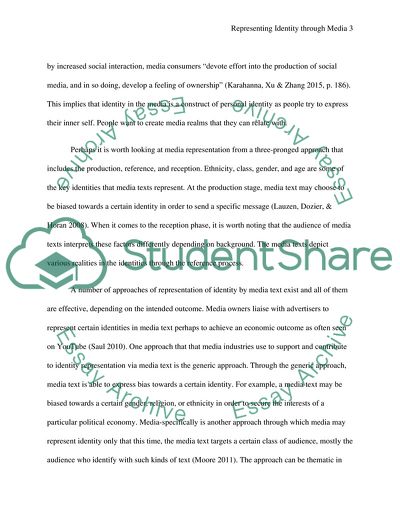Cite this document
(Representing Identity through Media Coursework Example | Topics and Well Written Essays - 2500 words, n.d.)
Representing Identity through Media Coursework Example | Topics and Well Written Essays - 2500 words. https://studentshare.org/media/1877679-in-what-ways-can-an-economic-reading-advertising-ownership-etc-of-media-industries-support-and-contribute-to-our-understanding-of-how-a-media-text-represents-identity-eg-class-gender-religion-your-answer-should-focus-on-one-specific-case-study
Representing Identity through Media Coursework Example | Topics and Well Written Essays - 2500 words. https://studentshare.org/media/1877679-in-what-ways-can-an-economic-reading-advertising-ownership-etc-of-media-industries-support-and-contribute-to-our-understanding-of-how-a-media-text-represents-identity-eg-class-gender-religion-your-answer-should-focus-on-one-specific-case-study
(Representing Identity through Media Coursework Example | Topics and Well Written Essays - 2500 Words)
Representing Identity through Media Coursework Example | Topics and Well Written Essays - 2500 Words. https://studentshare.org/media/1877679-in-what-ways-can-an-economic-reading-advertising-ownership-etc-of-media-industries-support-and-contribute-to-our-understanding-of-how-a-media-text-represents-identity-eg-class-gender-religion-your-answer-should-focus-on-one-specific-case-study.
Representing Identity through Media Coursework Example | Topics and Well Written Essays - 2500 Words. https://studentshare.org/media/1877679-in-what-ways-can-an-economic-reading-advertising-ownership-etc-of-media-industries-support-and-contribute-to-our-understanding-of-how-a-media-text-represents-identity-eg-class-gender-religion-your-answer-should-focus-on-one-specific-case-study.
“Representing Identity through Media Coursework Example | Topics and Well Written Essays - 2500 Words”. https://studentshare.org/media/1877679-in-what-ways-can-an-economic-reading-advertising-ownership-etc-of-media-industries-support-and-contribute-to-our-understanding-of-how-a-media-text-represents-identity-eg-class-gender-religion-your-answer-should-focus-on-one-specific-case-study.


